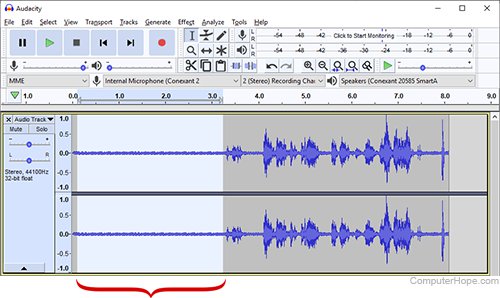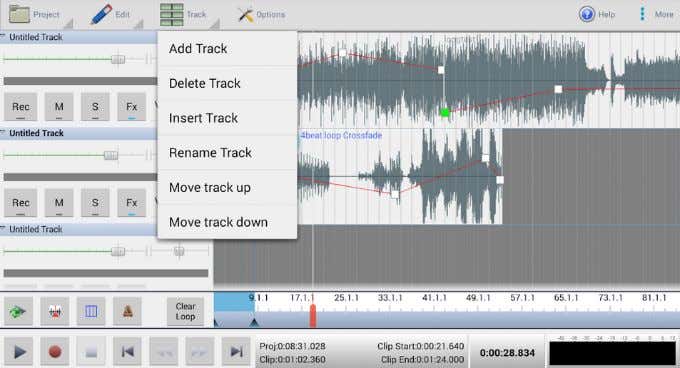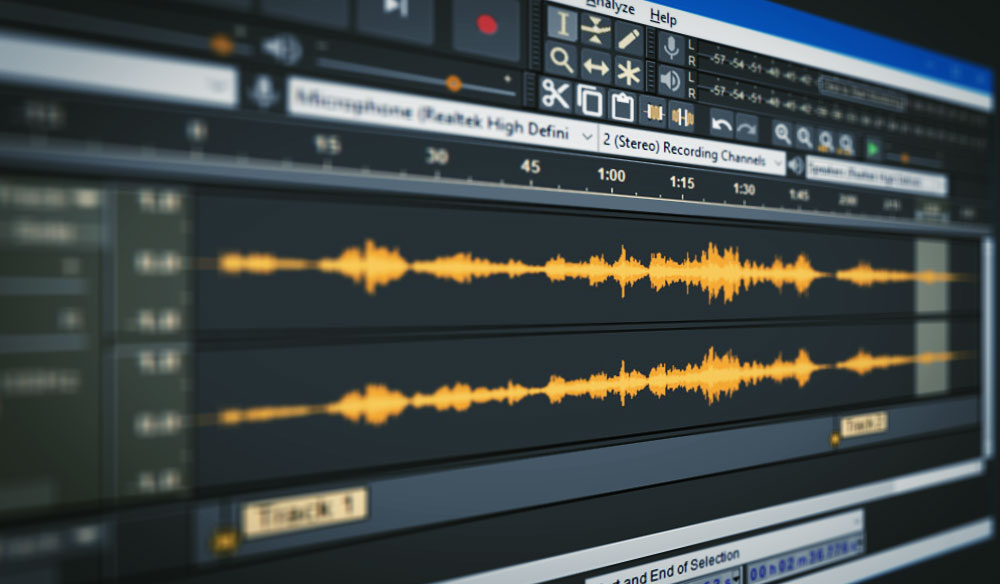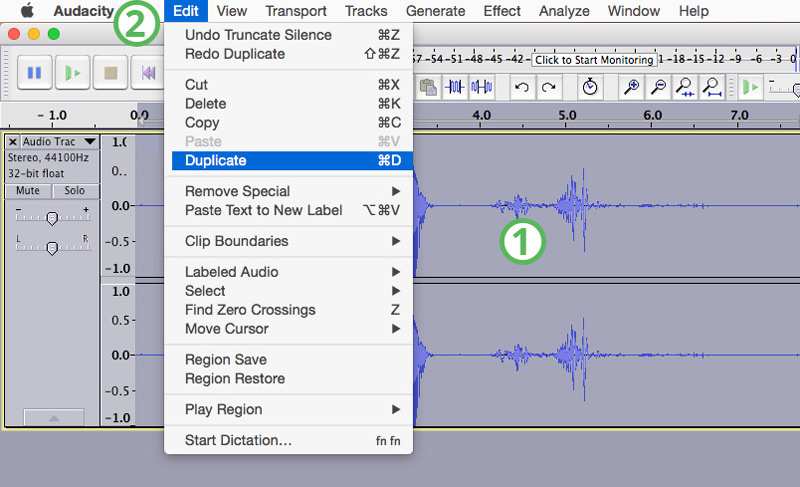
- #Audacity audio editor isolate a specific sound full
- #Audacity audio editor isolate a specific sound software
- #Audacity audio editor isolate a specific sound trial
- #Audacity audio editor isolate a specific sound mac
- #Audacity audio editor isolate a specific sound windows
It also features impressive restoration capabilities. This includes tools like De-ess, De-plosive, De-reverb, Ambience Match and Voice De-noise. IZotope RX 9 is a powerful audio editing plug-in that offers an extensive toolset.

Advanced option is expensive for a repair tool.
#Audacity audio editor isolate a specific sound mac
Adobe Audition is compatible with both Mac and PC.
#Audacity audio editor isolate a specific sound trial
Adobe also offers a complete seven-day free trial with no credit card required. It’s also important to note that Audition has a stand-alone monthly subscription if you don’t plan to use Adobe’s other offerings.Ĭurrently, you can get the complete Adobe CC for $53 a month or pay $21 for just Audition. Adobe CC lets you easily move projects from Audition to Premiere and vice versa, which can make your overall post work a much quicker process.
#Audacity audio editor isolate a specific sound software
If you already have a subscription to Adobe CC for its powerful software suite, then Audition is a great bonus that you should consider trying. The latest version adds new DeNoise and DeReverb tools as well as general improvements to the interface and multitrack management.Īudition also has the advantage of being bundled with Adobe Creative Cloud. However, it can also be used to record and edit music clips. One of Audition’s greatest strengths is its audio restoration abilities.

A free trial of the Studio version is available, as well. Sound Forge Audio Studio 15 retails for $50, or you can pay $2.99 per month for a subscription to Sound Forge Audio Studio 365.
#Audacity audio editor isolate a specific sound windows
The software also has some new features compared to the previous version, including a remote recording feature and a streamlined Windows context window.
#Audacity audio editor isolate a specific sound full
This software supports FLAC and AAC formats and up to six audio channels per project allowing you to edit in full 5.1 surround sound. Magix Audio Studio 15 also includes iZotope Ozone Elements, which is a nice plus. The Audio Studio’s interface is fully adjustable with four different hues: Dark, Medium, Light and White. Other handy features include one-touch recording, a spectrum analysis tool and a new Event Tool that is supposed to offer a more flexible editing experience. In short, features like audio restoration tools, time stretch and pitch manipulation make this software appealing to the video editor. You'll probably need to repeat the process multiple times, refining the parameters.While the name may not be as familiar to editors using Adobe, AVID or Apple Products, Sound Forge has been around for 25 years. Then go to Audacity and apply Notch Filters for each time interval and frequency you previously identified. Take notes of the time intervals and frequencies. If so, find on the left hand scale the frequency (or frequency band) where it seems to fit mostly. Listen to your audio while looking at the spectrogram and see if you can visually correlate the sounds you want to eliminate with specific high energy presence in the spectrogram (i.e. The details of the resulting spectrogram will intirely depend on the specific audio, but here's an example of a spectrogram (probably from a piece of music): Load your audio into Sonic Analiser and perform a spectral analisys. I recomend Sonic Visualizer as a free/open source tool widely used for audio analisys in research and academia (setting up Sonic Visualizer with the required plugins may be a bit of a project on it self, but there are instructions in the site and it's worth the trouble). In practical terms I would suggest not to start with Audacity (as excellent tool as it is), but to a more specialized audio analisys tool. Best results (or perhaps, not so bad results) may be achieved if this process is done specifically to different audio segments, depending on how the voices mix along the recording. Then you need to apply filters to remove these frequencies from the audio. It's hard to summarize an approach without going into lengthy technical explanations, and to be honest, I think it will be extremely difficult for someone without the proper training to do it, but even so it may be worthwhile to lay out the basic approach.īasically, you need to identify frequencies in your recording that belong to the voice (ot other sounds) you want to eliminate, but not (as much as possible) to the voices you want to keep. So it's a matter of experimentation and trying to get the best compromise. Depending on the specific case, it may me possible to attenuate the voice you don't want, probably at the expense of the overall quality and perceptibility of the rest. It may or (most probably) may not be possible to do what you wish, as voices are voices and take more or less the same place in the frequency spectrum, so there is no "magical" way of isolating them.


There is no generic recipe to remove a certain specific sound from a recording.


 0 kommentar(er)
0 kommentar(er)
